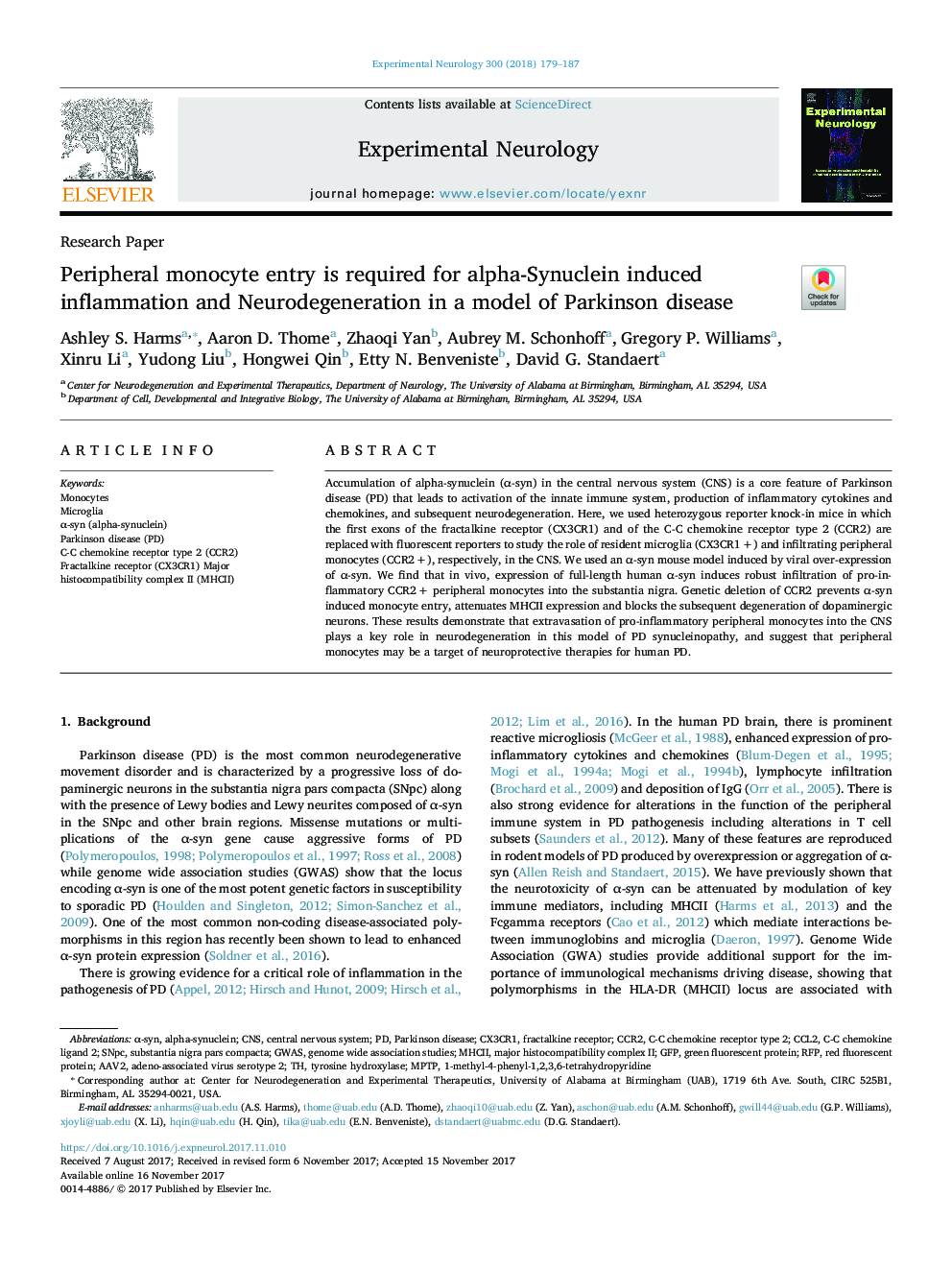| Article ID | Journal | Published Year | Pages | File Type |
|---|---|---|---|---|
| 8684738 | Experimental Neurology | 2018 | 9 Pages |
Abstract
Accumulation of alpha-synuclein (α-syn) in the central nervous system (CNS) is a core feature of Parkinson disease (PD) that leads to activation of the innate immune system, production of inflammatory cytokines and chemokines, and subsequent neurodegeneration. Here, we used heterozygous reporter knock-in mice in which the first exons of the fractalkine receptor (CX3CR1) and of the C-C chemokine receptor type 2 (CCR2) are replaced with fluorescent reporters to study the role of resident microglia (CX3CR1 +) and infiltrating peripheral monocytes (CCR2 +), respectively, in the CNS. We used an α-syn mouse model induced by viral over-expression of α-syn. We find that in vivo, expression of full-length human α-syn induces robust infiltration of pro-inflammatory CCR2 + peripheral monocytes into the substantia nigra. Genetic deletion of CCR2 prevents α-syn induced monocyte entry, attenuates MHCII expression and blocks the subsequent degeneration of dopaminergic neurons. These results demonstrate that extravasation of pro-inflammatory peripheral monocytes into the CNS plays a key role in neurodegeneration in this model of PD synucleinopathy, and suggest that peripheral monocytes may be a target of neuroprotective therapies for human PD.
Keywords
CCL2Parkinson disease (PD)RFPMHCIIC-C chemokine receptor type 2CCR2CX3CR1AAV2MPTPα-SynGFP1-methyl-4-phenyl-1,2,3,6-tetrahydropyridineSNpcAlpha-synucleinmajor histocompatibility complex IIParkinson diseasesubstantia nigra pars compactatyrosine hydroxylaseCNScentral nervous systemgenome wide association studiesGWASMonocytesMicrogliagreen fluorescent proteinred fluorescent proteinfractalkine receptor
Related Topics
Life Sciences
Neuroscience
Neurology
Authors
Ashley S. Harms, Aaron D. Thome, Zhaoqi Yan, Aubrey M. Schonhoff, Gregory P. Williams, Xinru Li, Yudong Liu, Hongwei Qin, Etty N. Benveniste, David G. Standaert,
